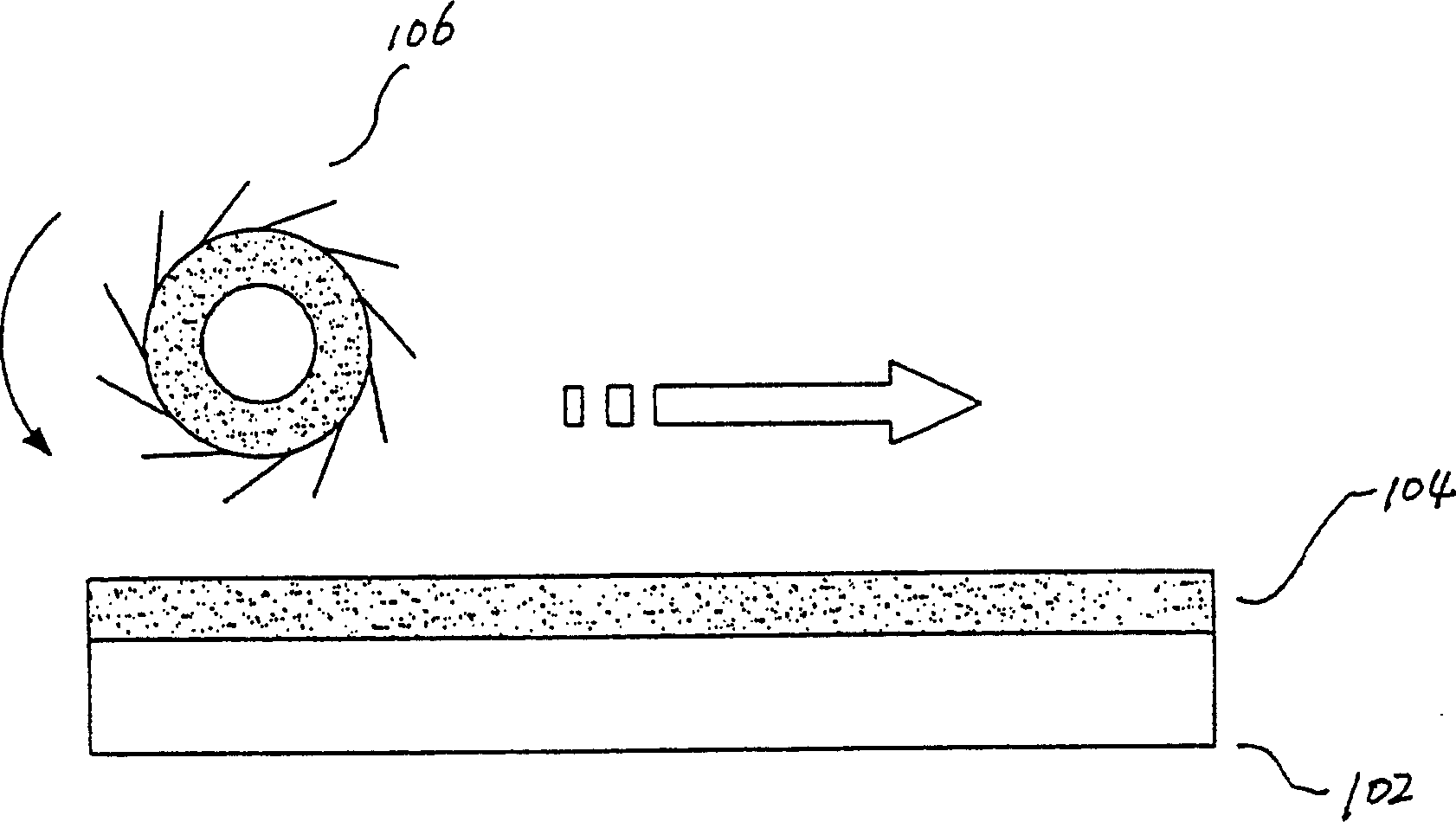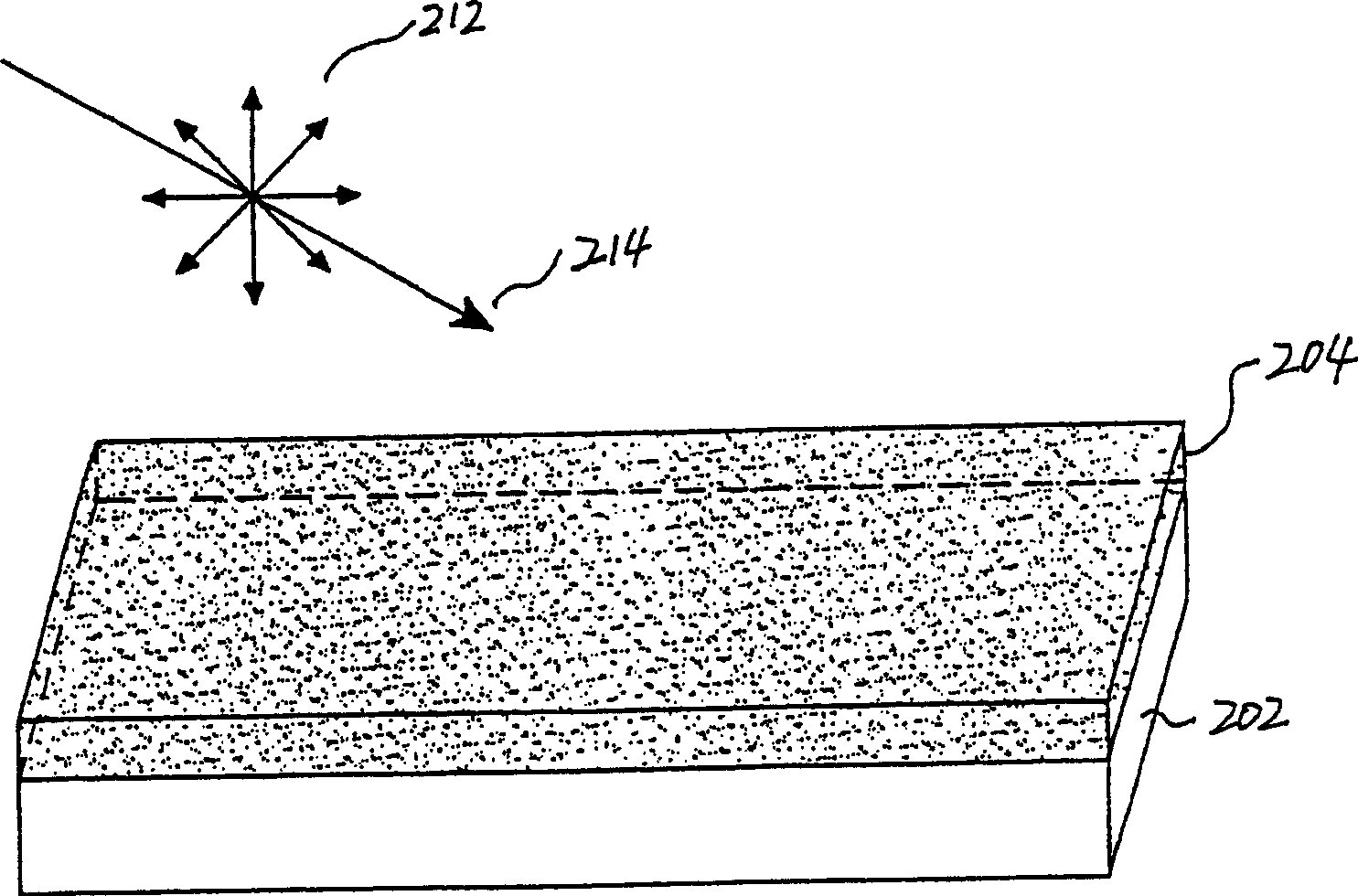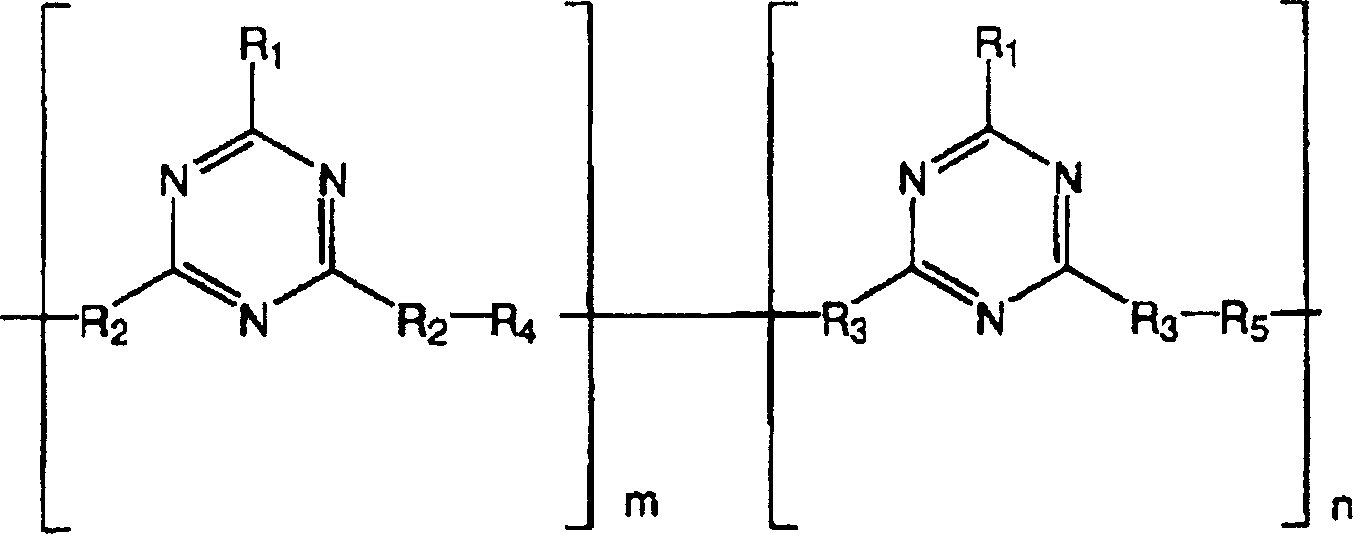Triazine ring based polymers for photoinduced liquid crystal alignment
A triazine ring-based, liquid crystal alignment technology, applied in optics, nonlinear optics, instruments, etc., can solve problems such as contact SiO deposition
- Summary
- Abstract
- Description
- Claims
- Application Information
AI Technical Summary
Problems solved by technology
Method used
Image
Examples
no. 1 approach
[0023] In a first embodiment, the general formula of the polymer is shown in Chemical Formula 1.
[0024] chemical formula 1
[0025]
[0026] In Chemical Formula 1, m+n=1, and m and n are real numbers of 0˜1, respectively.
[0027] In chemical formula 1, R 1 is one selected from 1a-4a in the following chemical formula 2.
[0028] chemical formula 2
[0029]
[0030] In 1a of Chemical Formula 2, X is one selected from Chemical Formula 3 below.
[0031] —((CH 2 ) n O) m — —O((CH 2 ) n O) m —
[0032]
[0033] In the above chemical formula 3, m and n are integers from 0 to 10 respectively;
[0034] In addition, in 1a of Chemical Formula 2, Y is one selected from Chemical Formula 4 below.
[0035] chemical formula 4
[0036]
[0037] In the above Chemical Formula 4, Y1, Y2, Y3, Y4, Y5, Y6, Y7, Y8, and Y9 are each selected from one of the following Chemical Formula 5.
[0038] chemical formula 5
[0039] —A —(CA 2 ) n CA 3 —O(CA 2 ) n CA ...
Embodiment 1-1
[0092] Polyamide polymers with cinnamate chromophores for photoinduced liquid crystal alignment
[0093] (1) reforming triazabenzene ring
[0094] 27.1 g of 4(2-tetrahydropyranylmethoxy)bromobenzene was dissolved in 250 ml of anhydrous tetrahydrofuran in a three-necked flask filled with nitrogen, followed by stirring for 24 hours after charging 3 g of magnesium. The solution was reacted at -20° C. for 12 hours in a three-necked flask filled with nitrogen, and at the same time, 18.4 g of cyanuric chloride was slowly added dropwise to 200 ml of anhydrous tetrahydrofuran.
[0095] After the reaction, the reaction solution was removed from tetrahydrofuran under reduced pressure at room temperature, and then dissolved in ethyl acetate. After the solution was mixed with a base solution and vigorously stirred to extract impurities, ethyl acetate was then removed from the solution under reduced pressure at room temperature.
[0096] The solid phase material remaining after solvent r...
Embodiment 1-2
[0113] A polyamide polymer with a chalcone chromophore for light-induced liquid crystal alignment
[0114] (1) Synthesis of chalcone functional groups
[0115] 10 g of methoxychalcone and 2.05 g of sodium cyanide were dissolved in 100 ml of dimethyl sulfoxide, followed by reaction for 24 hours. After the reaction, the reaction solution was mixed with chloroform and stirred with distilled water to extract impurities. After removing the solution phase, the solution was depressurized at room temperature to remove chloroform. After recrystallizing the remaining solid phase in methanol, the solution was vacuum-dried, thus obtaining 4-hydroxychalcone for photoreaction.
[0116] (2) The hydroxyl functional group is introduced into the triazine ring
[0117] 23.8 g of 4-hydroxychalcone obtained by the method of (1) of Example 1-2 was added to a round bottom flask filled with nitrogen and then dissolved in 240 ml of anhydrous tetrahydrofuran. 2.4 g of sodium hydride (NaH) was added...
PUM
| Property | Measurement | Unit |
|---|---|---|
| Viscosity | aaaaa | aaaaa |
Abstract
Description
Claims
Application Information
 Login to View More
Login to View More - R&D
- Intellectual Property
- Life Sciences
- Materials
- Tech Scout
- Unparalleled Data Quality
- Higher Quality Content
- 60% Fewer Hallucinations
Browse by: Latest US Patents, China's latest patents, Technical Efficacy Thesaurus, Application Domain, Technology Topic, Popular Technical Reports.
© 2025 PatSnap. All rights reserved.Legal|Privacy policy|Modern Slavery Act Transparency Statement|Sitemap|About US| Contact US: help@patsnap.com



